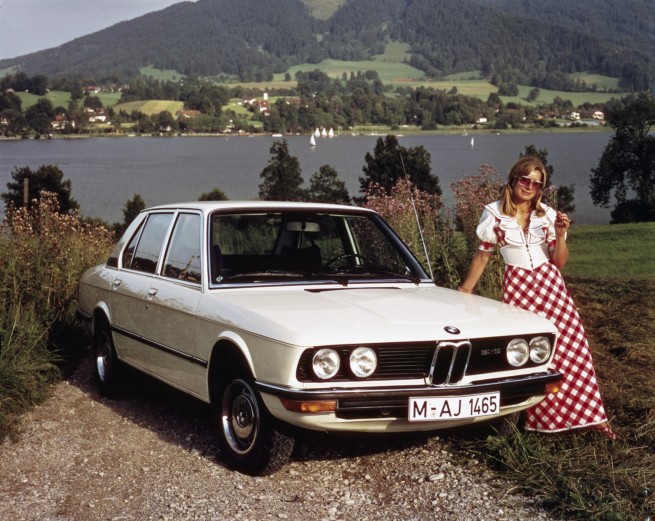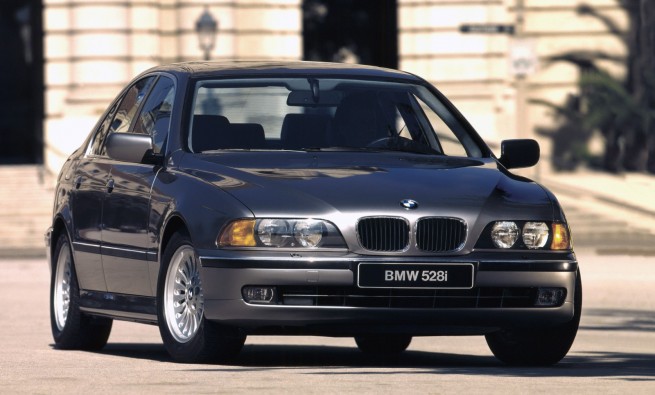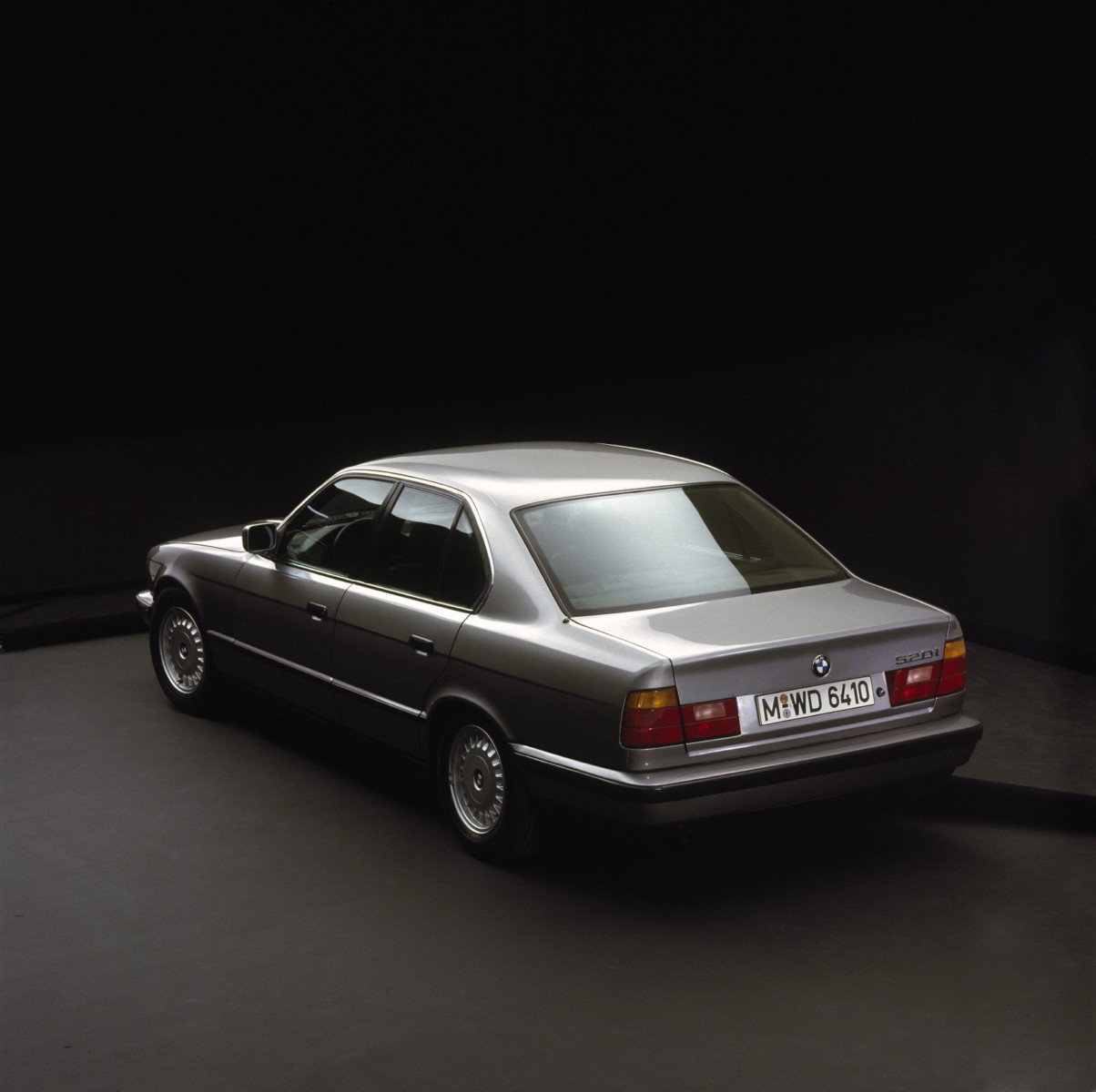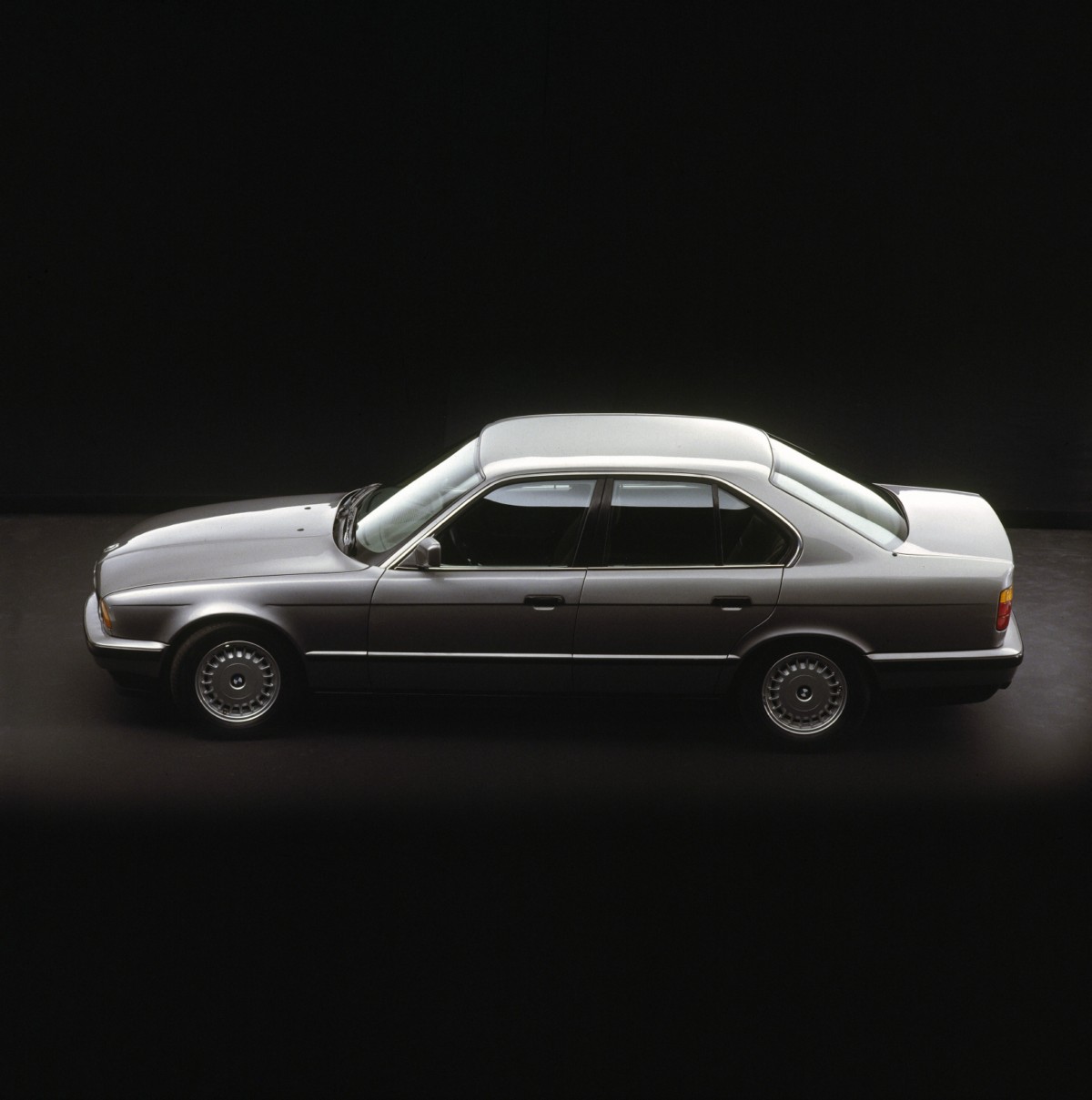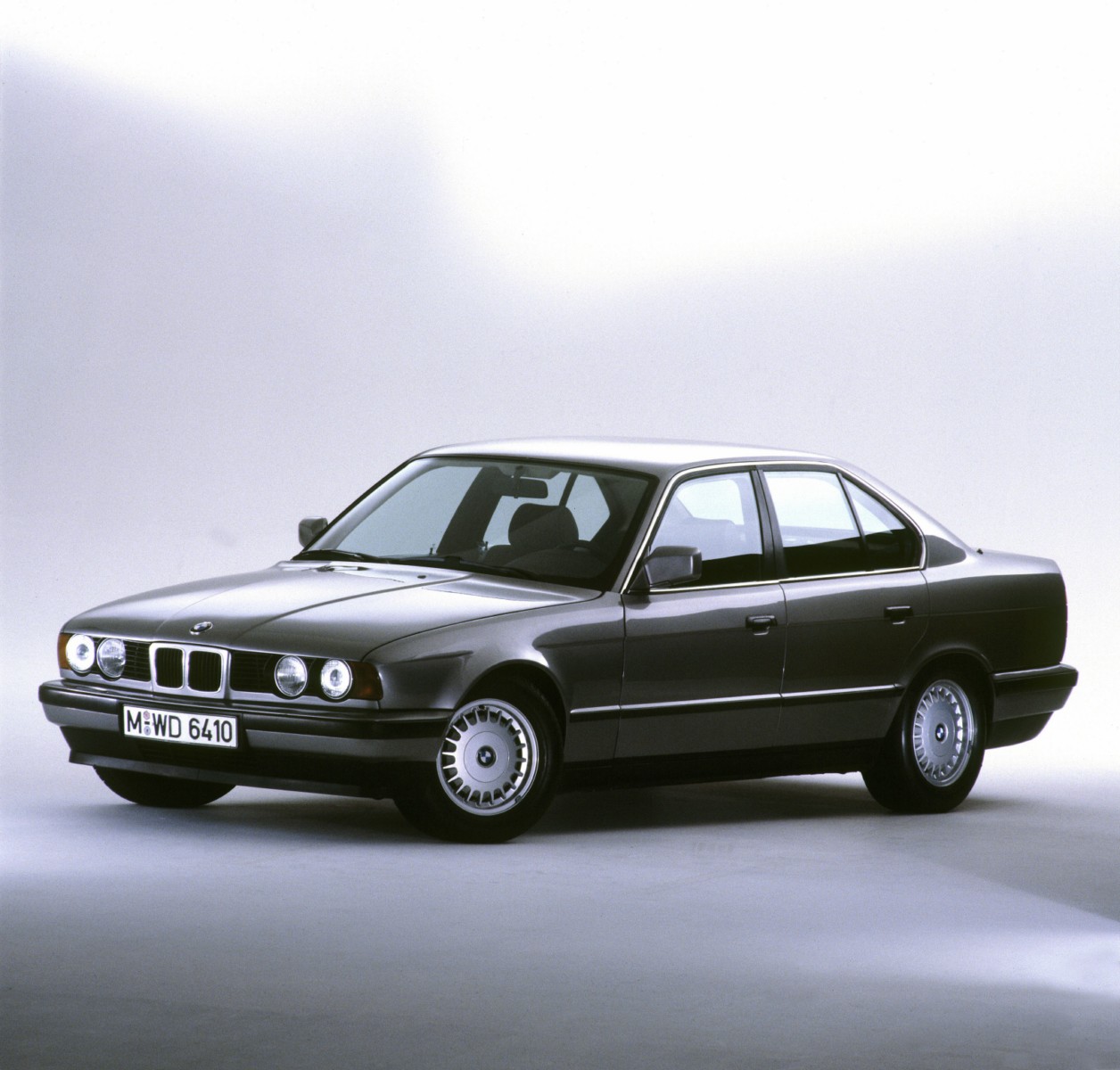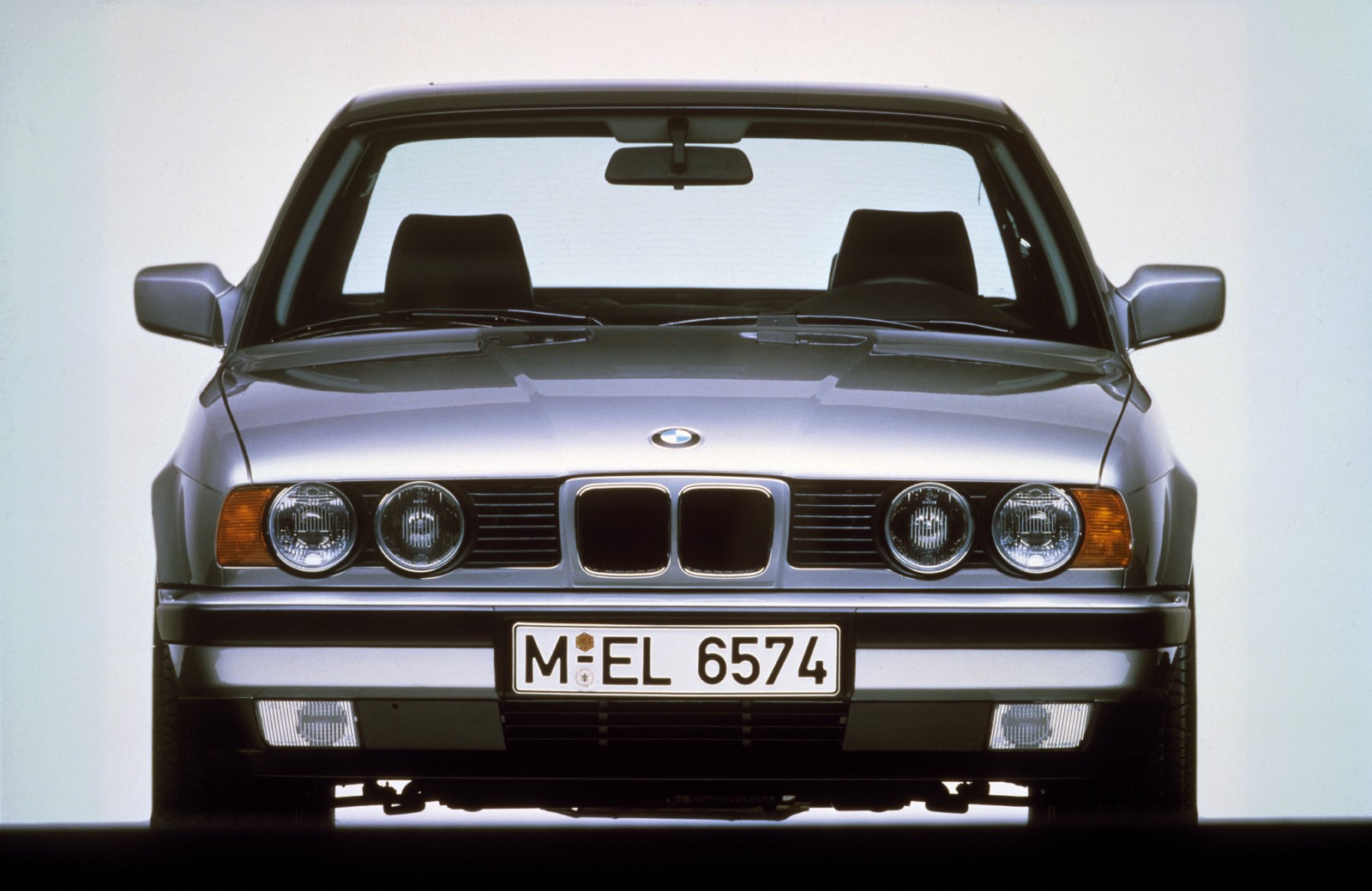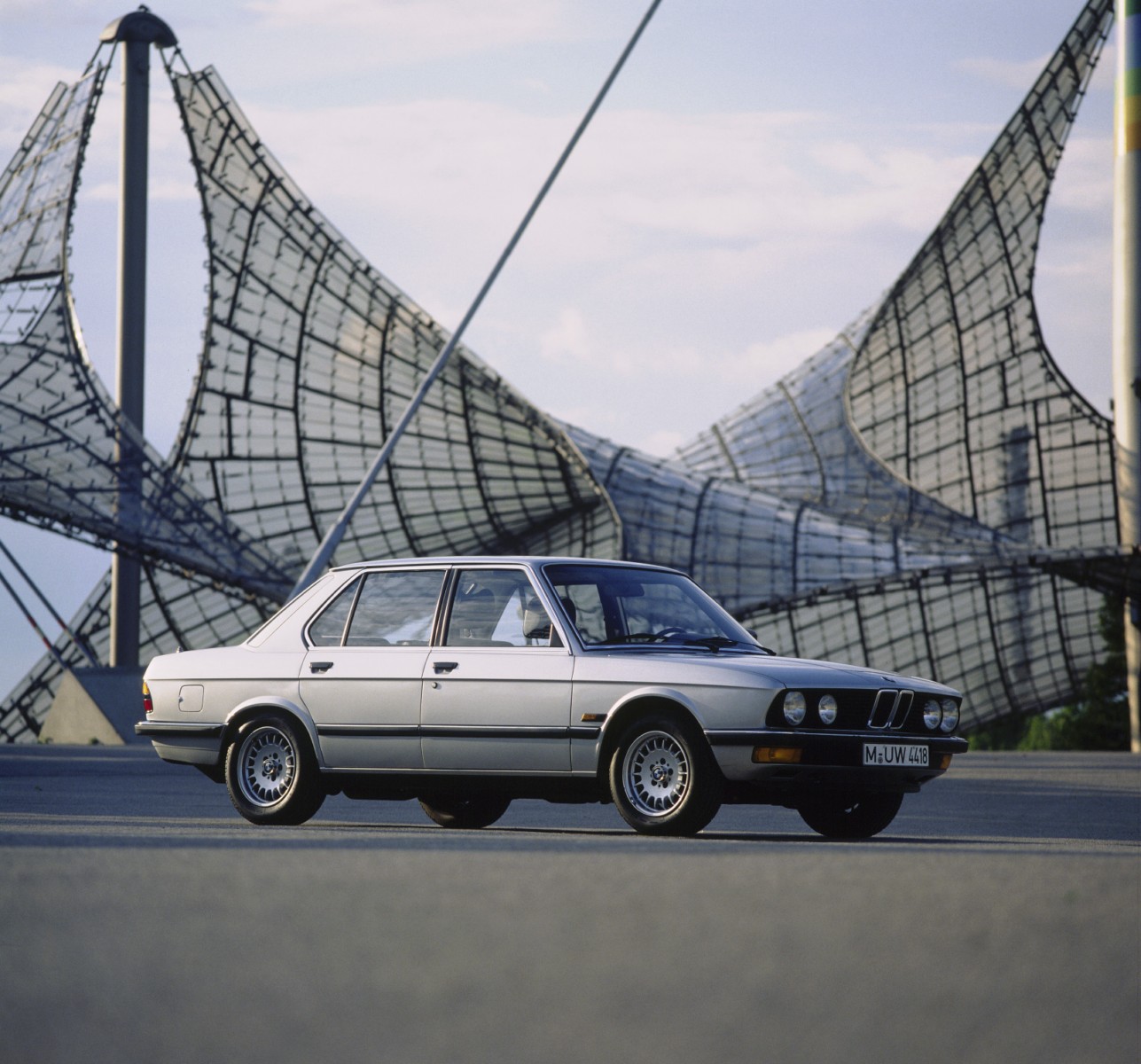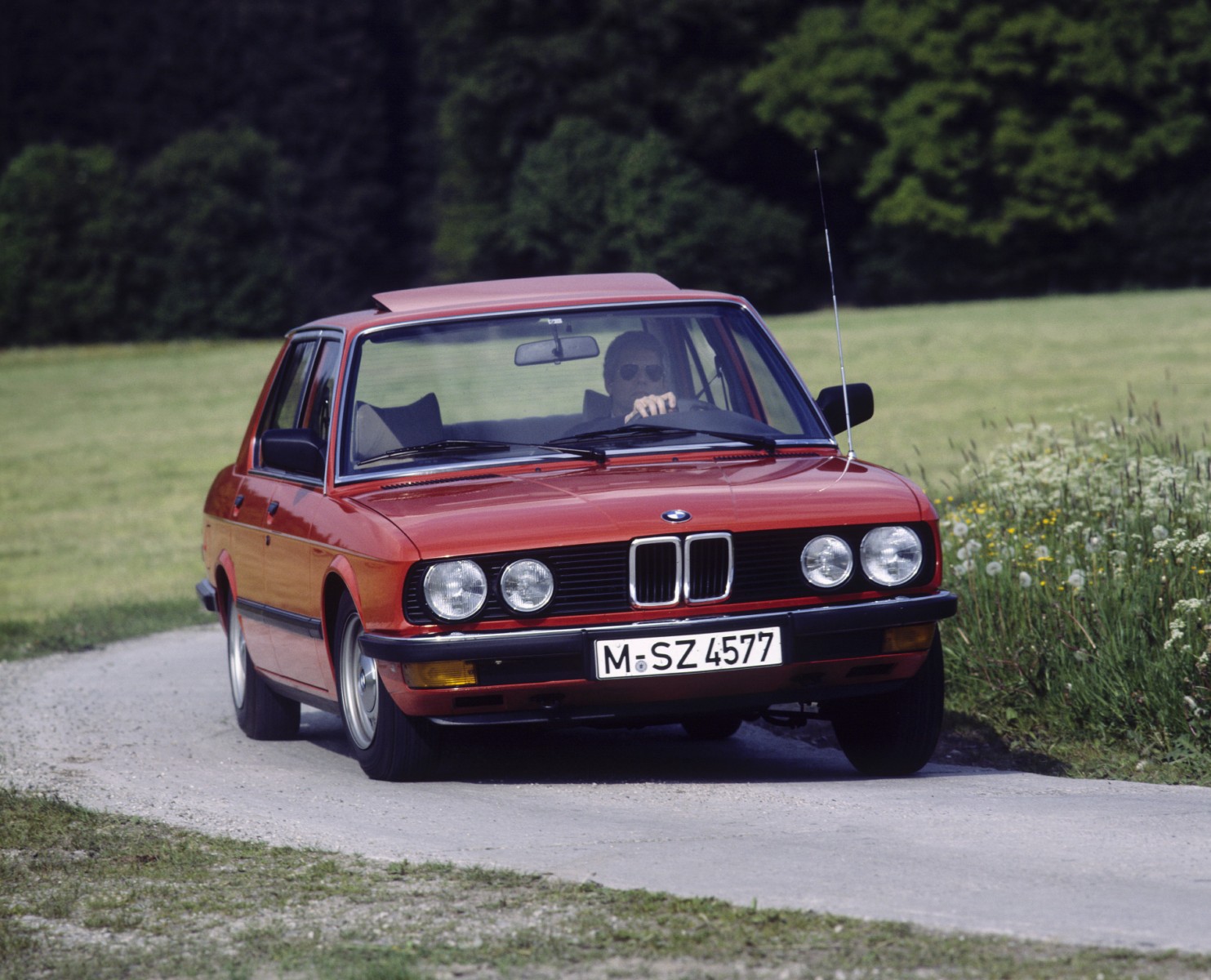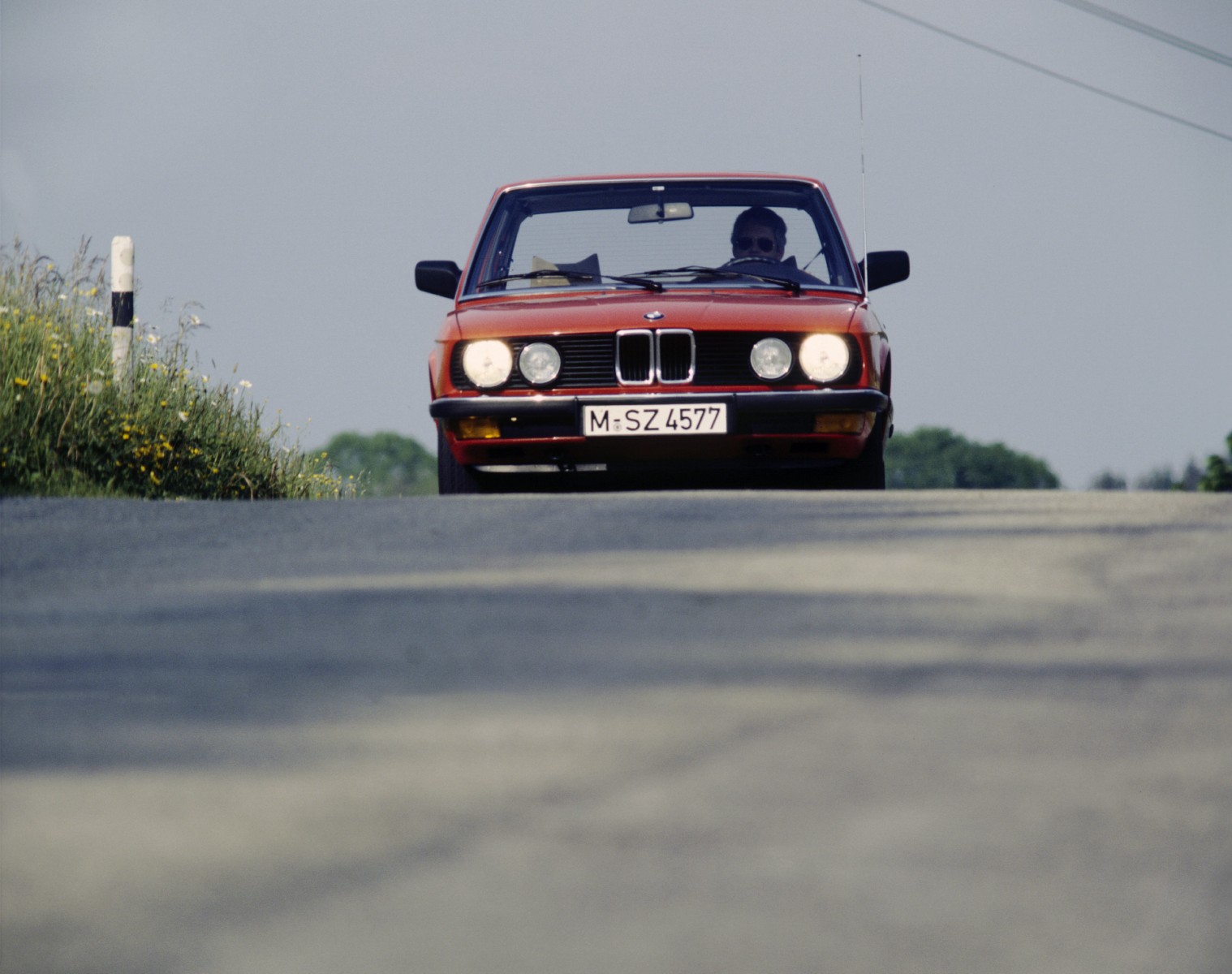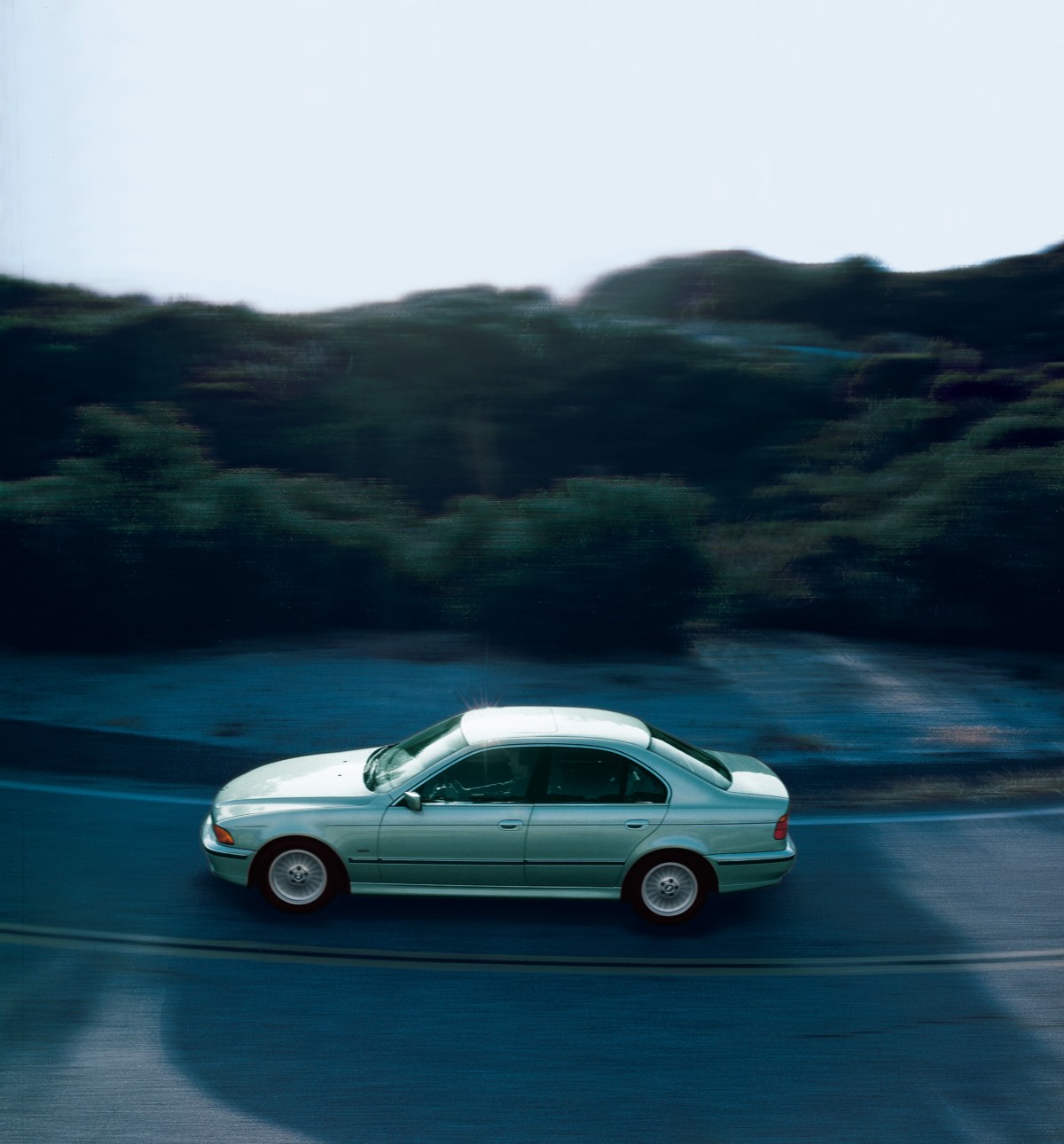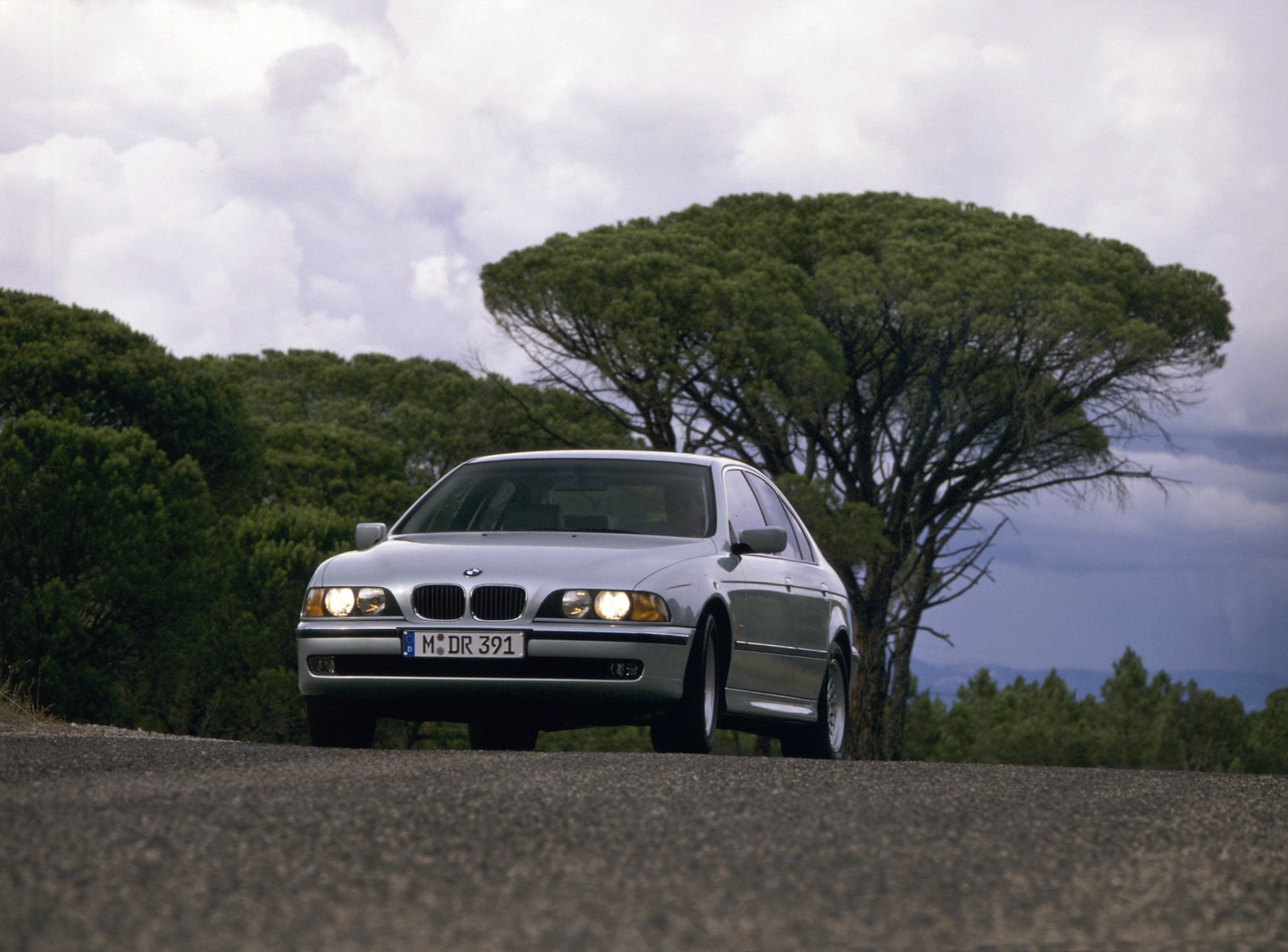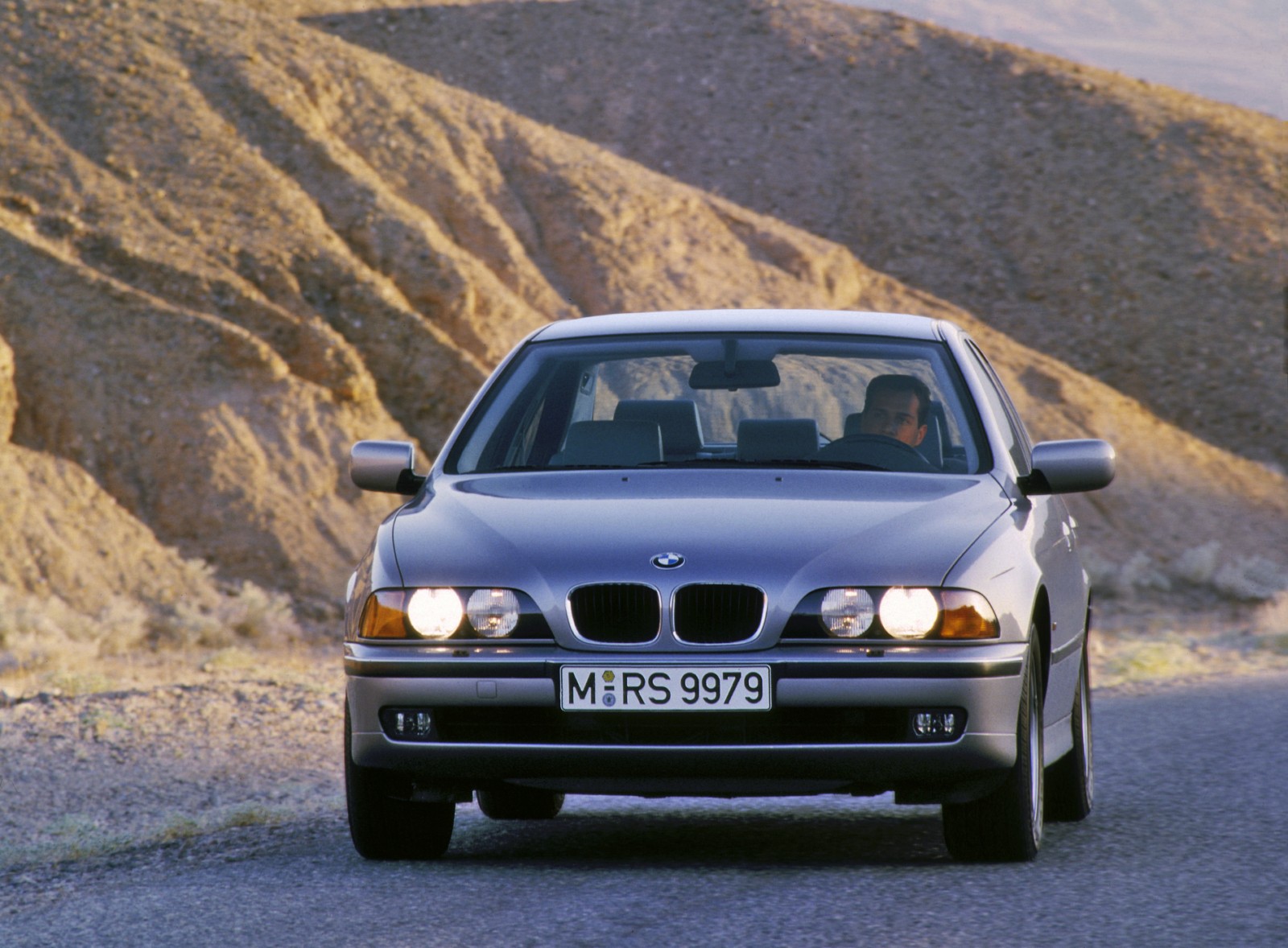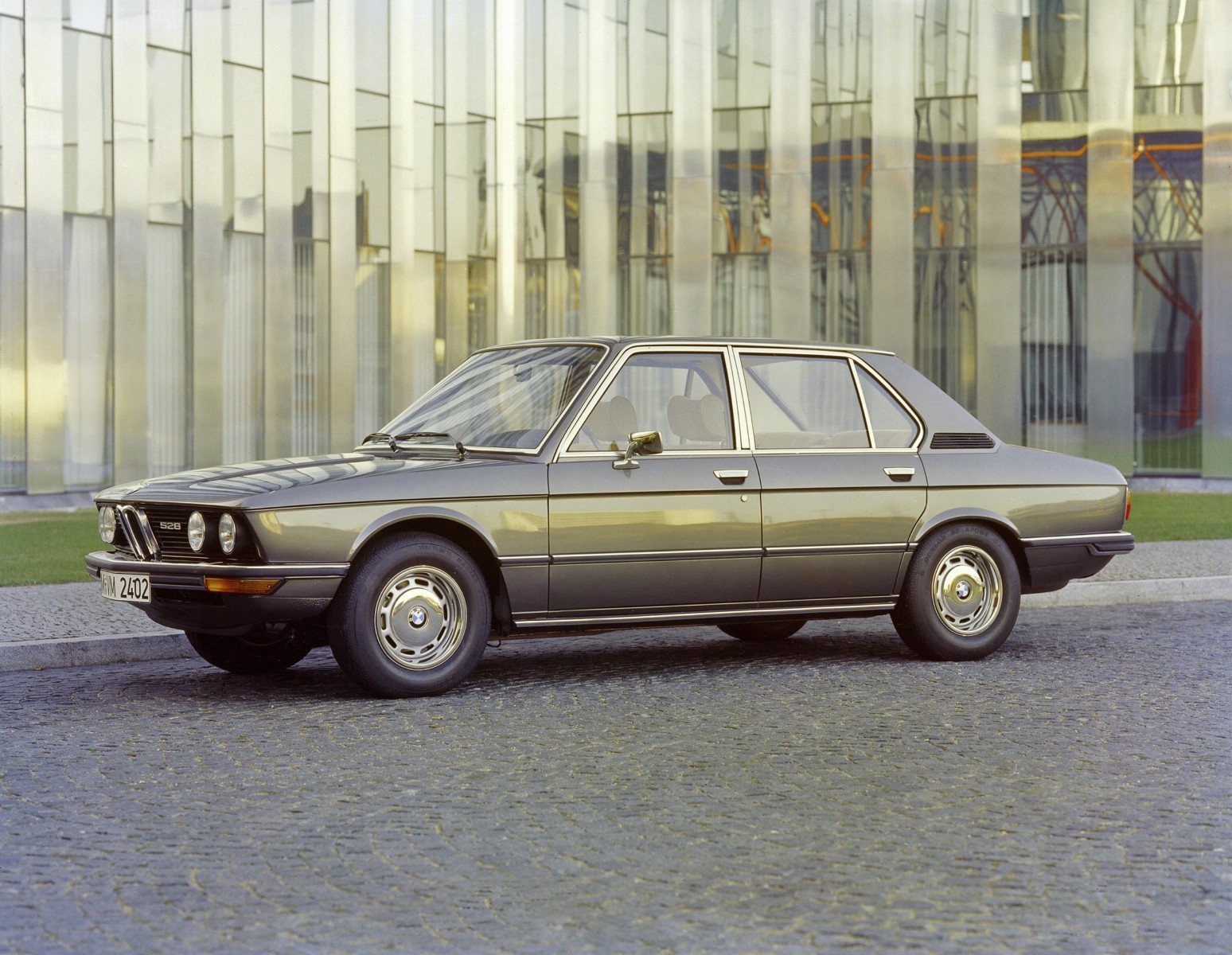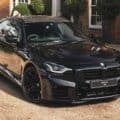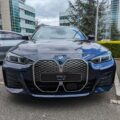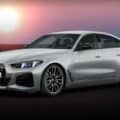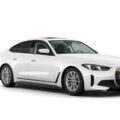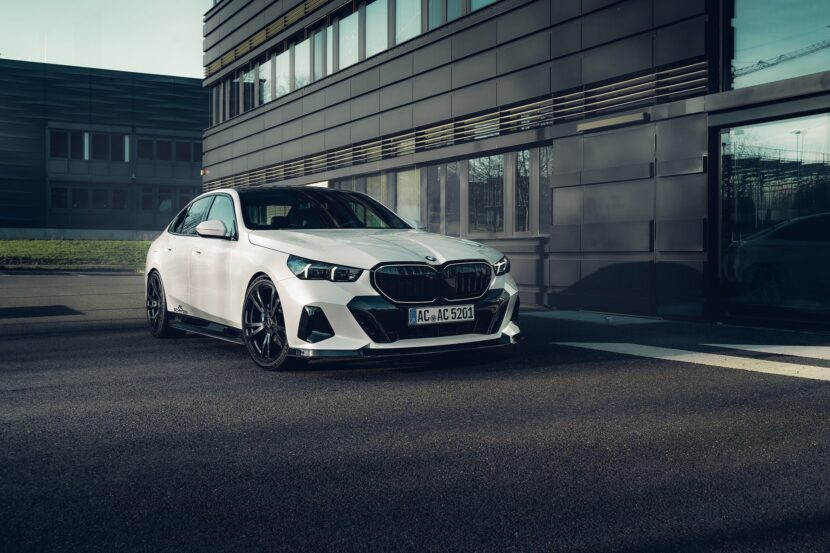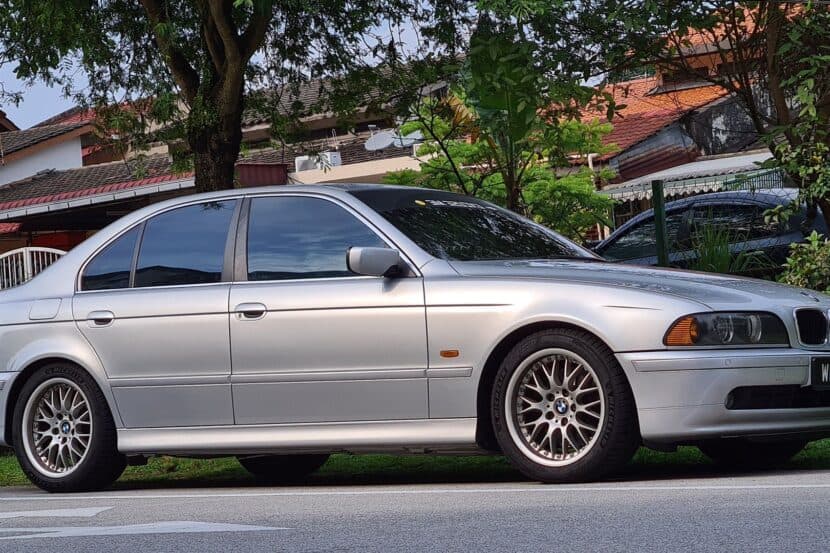Sales of the BMW 5 Series already amount to more than 5.5 million units in five model generations – and now a new chapter is starting in the highly successful story of the BMW 5 Series Sedan.
While the sixth generation naturally follows the great heritage of its predecessors, its roots go back much further. As early as in the 1960s, BMW developed a strong and distinctive profile as a manufacturer of sporting but elegant, powerful and technically innovative midrange four-door sedans. Introducing a four-door notchback body, engines fitted lengthwise at the front, rear-wheel drive and an elaborate suspension, BMW established a classical principle at the time which remains highly attractive and fully endorsed to this very day.
It was at that time that the BMW 1500, the BMW 1800 and the BMW 2000 entered the market as the “New Range”, establishing the most successful model series BMW had ever seen up to that point. The competence in the development and production of saloons demonstrated by BMW with these models gave the Company a worldwide breakthrough as a manufacturer of modern and highly desirable automobiles with very individual characteristics.
Switching from the New Range to the BMW 5 Series in 1972, BMW introduced not only new nomenclature, but also a new era in design.
Indeed, the number “5” immediately became the synonym for unmistakable driving pleasure in this segment. Ever since, the BMW 5 Series has stood for sedans which, through their design, offer particularly harmonious balance of sportiness and elegance authentically reflecting a unique combination of driving dynamics and motoring comfort ensured by superior drivetrain and suspension technology. The BMW 5 Series therefore offers a particularly concentrated rendition of the outstanding competence in development of this leading car maker from Munich.
1972: the BMW 5 Series makes its debut.
The BMW 520 and the BMW 520i with four-cylinder power units developing 115 and, respectively, 130 hp were presented at the 1972 Frankfurt Motor Show as the successors to the New Range. The model designation introduced a new concept determining the nomenclature of BMW cars to this very day, with the ”5“ at the beginning specifying the series as such and the two following numbers indicating the displacement of the respective model. At the same time these model designations brought back memories of legendary BMWs in the 1950s such as the BMW 501 “Baroque Angel” and the iconic BMW 507 sports car.
In its design, the first BMW 5 Series stood out from the start through its stretched and sleek lines, large windows and low waistline. As design elements typical of the brand, the dual headlights and the Hofmeister kick in the C-pillar were re-interpreted in new style and technology, French designer Paul Bracq thus setting the foundation for the design language of BMW so characteristic in the 1970s. To precisely calculate the car’s deformation zones in the interest of superior occupant safety, BMW’s engineers for the first time used superior computer technology to a large extent.
Introduction of the BMW 525 in the second year of production hailed the entry of the first six-cylinder into the market. The powerful and, at the same time, refined engine featured in this top model delivered an impressive 145 hp. This wish for additional power became one of the most important reasons for expanding the model range also in the years to come, BMW Motorsport GmbH established in 1972 providing particularly spectacular input by presenting the BMW M535i with its 160 kW/218 hp six-cylinder in 1980.
1981: second generation, first diesel.
Accounting for sales of almost 700,000 units, the first generation of the BMW 5 Series more than doubled the success of the New Range in the market. The next model launched in 1982 then continued this story of success, remaining faithful in its design to the principle of clear lines and large windows.
With its even more striking design front and rear, the new BMW 5 Series, despite its exterior dimensions remaining almost identical, offered far greater presence and flair on the road. Engineering refinements and intelligent lightweight technology provided more space within the interior, optimum weight and improved occupant safety. The newly developed suspension with its double-joint front axle and semi-trailing arm rear axle served in particular to enhance the motoring comfort offered by the new model. Modern electronic systems were also introduced into the BMW 5 Series at this point, ranging from anti-lock brakes via an on-board computer all the way to electronic fuel injection.
Right from the start upon its introduction into the market, the new sedan came with a broad model range and engines extending from 90 to 184 hp. A particularly sporting version was introduced in 1984, even though the 218 hp BMW M535i was not the last word from Motorsport GmbH this time. Instead, Motorsport GmbH proudly presented the very epitome of the Sports Sedan at the 1985 Frankfurt Motor Show, the BMW M5. Hardly distinguishable from the other models when considered from outside, the BMW M5 was optimised throughout beneath its sheet metal for uncompromising driving dynamics. Power came from a straight-six boasting four-valve technology and no less than six throttle butterflies. Output of this drive unit derived from the legendary BMW M1 was 286 hp, developing supreme thrust and performance previously offered by only the most thoroughbred sports cars.
The decision taken by BMW in 1983 to enter the fiercely contested diesel market with the BMW 524td was almost a revolution. To offer the character so typical of the brand also with a diesel, the only option was obviously to give the car a powerful and refined turbodiesel engine. The 2.4-litre straight-six developing maximum output of 115 hp fulfilled these requirements in a truly ideal manner, the BMW 524td offering the best performance of all diesels in its segment and, at the same time, the highest standard of fuel efficiency. Clearly, even diesel skeptics were impressed by this innovative combination of superior muscle and equally outstanding economy.
Entry into the diesel market was not the only option for BMW to bring together sporting performance and superior economy. On the contrary – precisely at this time BMW had already completed a large number of studies and innovations in developing particularly fuel-efficient technologies and looking for alternative sources of energy. Many of these innovations went into series production in the course of time, others set the foundation for long-term research projects. One example is the hydrogen-powered test car presented as early as in 1976 on the basis of the first-generation BMW 5 Series.
Apart from the turbodiesel, a particularly efficient petrol version of the BMW 5 Series proved suitable for series production right from the start: The BMW 525e was powered by a six-cylinder designed and built consistently for superior traction and economy all in one. Displacing 2.7 litres, the power unit named after the Greek letter “eta” also known as the symbol for efficiency developed maximum output of 125 hp at an engine speed of 4,250 rpm, with peak torque of 240 Newton-metres/177 lb-ft at just 3,250 rpm. New engine electronics, optimised weight and a five-speed transmission with an overdrive economy function were further features helping to give this model outstanding efficiency.
The second generation of the BMW 5 Series was replaced after seven years of production. By this time sales had amounted to more than 722.000 units, again setting a new record.
1988: third generation of the BMW 5 Series – for the first time also as the Touring.
With BMW having started the introduction of catalyst technology back in 1984, the third-generation BMW 5 Series was fitted from the start exclusively with this high standard of emission management. The first models available from the beginning in 1988 were the BMW 520i, the BMW 525i, the BMW 530i, the BMW 535i, and the BMW 524td) – all with six cylinders and electronic fuel injection. The power range extended from 115 all the way to 211 hp.
A new BMW M5 was also introduced at an early point, with engine output of 315 hp further increased to 340 hp in 1992.
The two eight-cylinder BMW 530i and BMW 540i followed in 1992, with the BMW 518i being introduced in 1993 as the entry-level model with a four-cylinder power unit. In the meantime, the six-cylinder engines, benefiting from four-valve technology and variable Vanos camshaft management, had gained even greater power, torque and efficiency.
With its precisely defined deformation zones and even stiffer passenger cell, the third generation of the BMW 5 Series set new standards in the area of occupant safety. As an option the elaborately refined suspension was available with electronically controlled dampers, a further option being speed-related Servotronic steering assistance. ASC Automatic Stability Control was also available for the first time in addition to the anti-lock brake system.
The first BMW 5 Series with electronically all-wheel drive was launched in 1991, the concept of fully variable power distribution from front to rear, together with a rear axle differential lock, proving right from the start in the first comparative tests to be superior to all four-wheel-drive systems available so far.
Compared with its predecessor, the third-generation BMW 5 Series was significantly longer and came with a lot more space inside, also thanks to its brand-new design. Indeed, the new sedan created under the guidance of Chief Designer Claus Luthe combined sporting elegance and flowing lines with a distinctive wedge shape. This stylish character was then carried over by the designers to the first BMW 5 Series Touring, this unique five-door revealed at the 1992 Frankfurt Motor Show offering a brand-new look and brand-new features behind the B-pillar.
With sound insulation being given particular significance, the level of sound within the body was virtually the same as in the sedan even though the generous space inside obviously formed an ideal resonance body for acoustic effect and disturbance. The BMW 5 Series Touring was fitted from the start with self-levelling on the rear axle.
The Touring model was available with nearly all the engines also offered on the sedan, and as an option also came with all-wheel drive. A BMW M5 Touring joined the range in 1992, successful sales of this five-door clearly confirming BMW’s concept to combine additional practical value with attractive design: Overall sales of the BMW 5 Series Touring up to 1996 amounted to approximately 125,000 units, and total sales of the third-generation BMW 5 Series were more than 1.3 million units the world over.
1995: the fourth generation – for the first time with light-alloy suspension.
The fourth generation of the BMW 5 Series made its debut at the 1995 Frankfurt Motor Show, offering an evolutionary development through its design of the former model with its sporting and elegant style. A particular feature at the front was the dual round headlights behind a glass cover, with the light rings for the positioning and daytime driving lights so typical of BMW being added in the year 2000.
Both the sedan and the Touring introduced in 1997 once again offered even more space within the passenger compartment. Boasting features such as a multifunction steering wheel, a navigation system, active seats and Dynamic Stability Control, the BMW 5 Series was acknowledged as a particularly outstanding high-tech representative of its segment.
In the interest of enhanced driving dynamics and safety, the body came with a significant increase in torsional stiffness over the former model, and the fourth-generation BMW 5 Series was the first large-scale production car worldwide made almost completely of light alloy. The newly developed all-aluminium power units also helped to significantly reduce the weight of the car.
The new model entered the market with straight-six power units delivering maximum output from 150 to 193 hp. Technical innovations gave both the petrol and diesel engines even more power on further reduced fuel consumption. Two V8 engines were introduced once again in 1996, with the new BMW M5 entering the market in 1998 with the most powerful production engine built by BMW up to that time: this 294 kW/400 hp power unit came, among other highlights, with features such as oil supply controlled for centrifugal forces and electronically controlled individual throttle butterflies.
The fourth generation of the BMW 5 Series once again set up a new sales record accounting for 1.47 million units sold up to the end of production in early 2004.
2003: the fifth-generation BMW 5 Series – progressive and efficient.
From the start, the fifth generation of the BMW 5 Series introduced in 2003 stood out through its impressive design and innovative technology. Once again, both the sedan and the Touring launched in 2004 set new standards in terms of active safety, driver assistance systems, and efficiency. BMW’s typical design language with convex and concave surfaces as well as flowing transitions from the front and side to the rear gave the fifth edition of the BMW 5 Series a particularly characteristic note, the interior with its clear-cut functions highlighting above all the iDrive control system featured as standard.
Engines with an aluminium or, respectively, a composite aluminium/magnesium crankcase as well as the lightweight aluminium front section of the car ensured a particularly good balance of weight front-to-rear. Another important component newly developed at the time was the integral rear axle likewise made of aluminium
DSC Dynamic Stability Control was yet another significant innovation contributing to the car’s excellent suspension technology, particularly through its enhanced range of functions. The same superiority was provided for the first time by Active Steering and Adaptive Drive with electronic damper adjustment and anti-roll stability management. As highlights in the area of driver assistance, the fifth-generation BMW 5 Series also featured cutting-edge technologies such as the Head-Up Display and BMW Night Vision, Active Cruise Control with Stop & Go and Lane Departure Warning introduced as new systems in
the car.
The range of engines in the BMW 5 Series was expanded to six petrol and four diesel engines extending from 125 kW/170 hp in the BMW 520i all the way to 270 kW/367 hp in the BMW 550i. The BMW M5 and the BMW M5 Touring, in turn, came with a 5.0-litre V10 high-speed power unit boasting individual throttle butterflies and dynamic oil supply, with maximum output of 373 kW/507 hp.
Starting in 2007, all versions of the fifth-generation BMW 5 Series were enhanced as standard through a wide range of BMW EfficientDynamics technologies varying appropriately from one model to another. Innovations such as Brake Energy Regeneration, a gearshift point indicator, active air flap control and on-demand ancillaries gave all models in their respective class an unparalleled balance of performance and fuel economy. The ultimate benchmark for efficiency in the upper midrange segment was in particular
the BMW 520d returning average fuel consumption in the EU test cycle of 5.1 litres/100 kilometres (equal to 55.4 mpg imp) and a CO2 emission rating of 136 grams per kilometre as record figures in this segment despite engine output of 130 kW/177 hp.
Offering striking design, innovative technology and outstanding efficiency, the fifth generation of the BMW 5 Series consistently continued the victorious history of this model family. From 2005 to 2008, the BMW 5 Series was the best-selling car in its segment for four years in a row, with worldwide sales of this model generation amounting to more than a million units by the end of 2007. Just a bit later, in January 2008, BMW Plant Dingolfing was able to celebrate a particularly impressive anniversary, with five million BMW 5 Series having come off the production line in Dingolfing since 1973.


